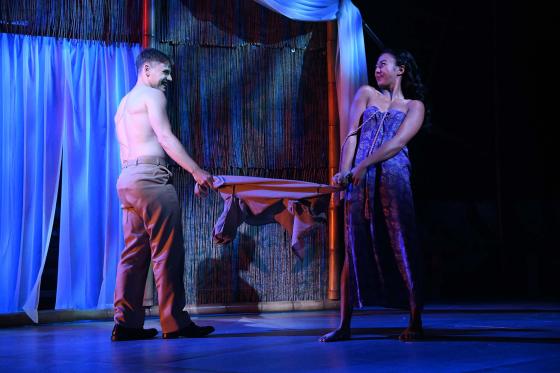This holiday season marks the ninth year Paul Morella has performed his one man adaptation of A Christmas Carol at Olney Theatre Center. Though this performance is certainly distinct from other play and musical adaptations for the stage, it is actually closest to how the story was originally intended to be experienced by Charles Dickens himself. It was meant to be presented by a single performer, rather than read or enacted by an ensemble; Dickens himself toured the story through Great Britain and America. Below is some dramaturgy from Paul Morella about Dickens’ renowned reading tours:
“Was Charles Dickens the first pop star? That is the comparison drawn from his public readings, 150 years ago. His gruelling tour itineraries read like Madonna’s or Eminem’s. People sometimes fainted at his shows. His performances even saw the rise of that modern phenomenon, the “speculator” or ticket tout. (The ones in New York City escaped detection by borrowing respectable-looking hats from the waiters in nearby restaurants.)
As well as being our greatest novelist, Dickens developed a new, composite art form in his stage performances, acting out specially adapted passages from his own works and varying his expressions and speech patterns, so that it seemed as if he were becoming possessed by the characters he created. His reading tours won him huge popular acclaim on both sides of the Atlantic. And in all probability they contributed to his premature death, from a stroke, in 1870.
Why did Dickens take his show on the road? His first public readings were for charity, beginning with two performances of A Christmas Carol, before a crowd of 2,000 working-class people in Birmingham. Soon, though, the offers of payment were coming in, and Dickens, always with an eye for the business opportunity, was tempted. But if money was a motivation, it was far from the only one. Dickens was fascinated by the stage: he had seriously considered becoming an actor as a young man, and had a small theatre fitted up at his house in Tavistock Square. He also clearly relished the chance of coming face to face with his readers, to whom he spoke so personally in the prefaces to his novels.”
We hope you join us for Paul’s adaptation of A Christmas Carol. And once you’re here, be sure to check out the program for more history behind this Christmas classic.
-min_1bcae.jpg?h=a60afe30&itok=01SUgIAB)






